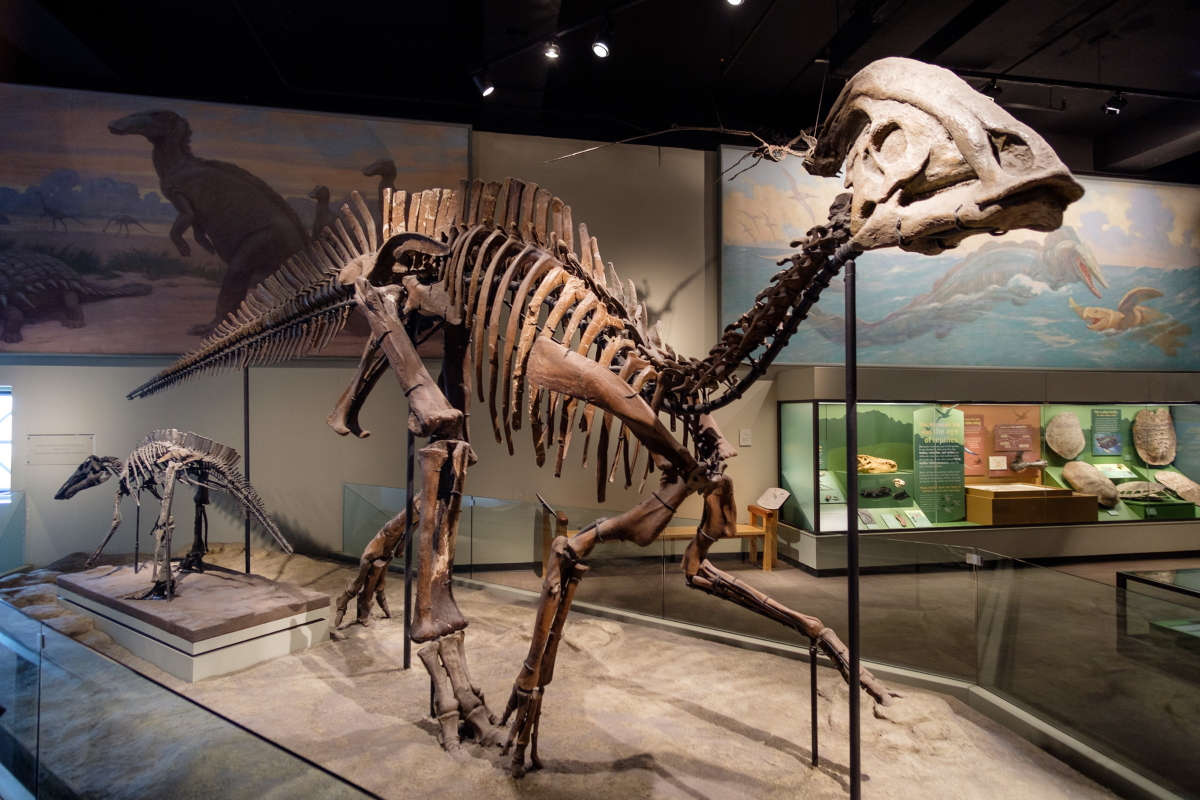
Parasaurolophus was a herbivorous hadrosaurid ornithopod dinosaur which lived in the late Cretaceous period approximately 83 to 71 million years ago. It is a well-known dinosaur, especially for the characteristic way in which its hammer-shaped skull ends. That crest that it has is exactly where its name derives from. «For» means «Together» in Greek, «Saurus» as we have already seen that means «Lizard», and finally «Lophos» that comes to mean «Crest». All of his name together would translate as "Near the Crested Lizard."
His rise to fame came thanks to Steven Spielberg's 1993 film Jurassic Park, like some other dinosaurs that were popularized thanks to it. We can also find the Parasaurolophus in other Disney movies, such as Fantasia or Dinosaurio, and also in Pixar animations such as "The Good Dinosaur". Or even here, in this article! That we are going to dedicate it to getting to know this curious dinosaur more closely, from its way of behaving, knowing it anatomically, and the different hypotheses about the function of its crest.
Parasaurolophus Anatomy
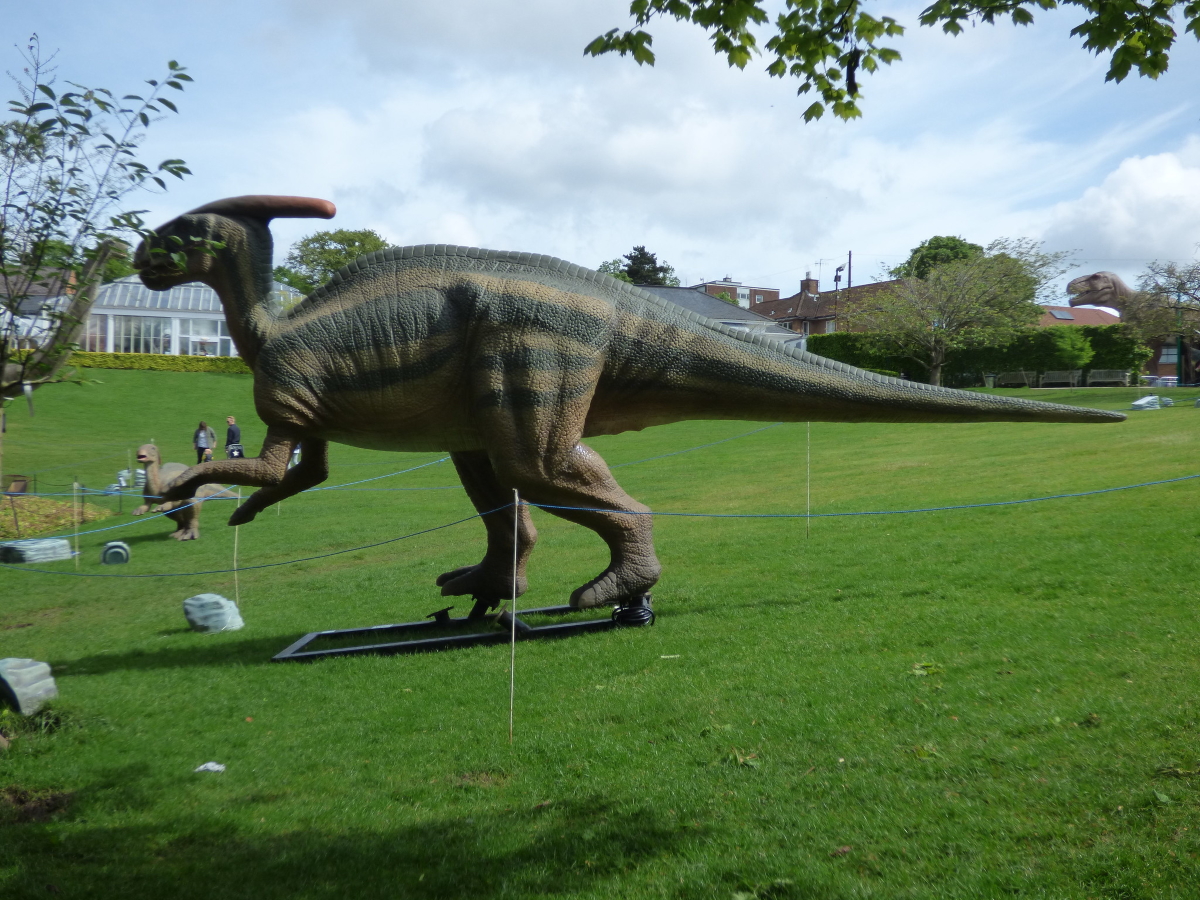
As is often the case with other dinosaur skeletons, the skeleton of Parasaurolophus has not been found in its entirety. It is also known that there were 3 different types, the Parasaurolophus Walkeri, the Tubicen, and the Cyrtocristatus. In principle, according to the fossil remains of P. Walkeri, it is calculated that long it must have been about 10 meters, with a skull of 1 meters including the crest and about 3 or 4 meters high. In the case of the Tubicen, the skull is even larger, leading to the theory that its body and length could have been larger.
Its weight is estimated at about 2 tons, and like the other hadrosaurids, it is believed that it could have walked on both 2 legs and with 4. The only known front limb is relatively short compared to other hadrosaurids, however, greater strength is observed with a short but broad scapula (shoulder blade). The femur found, from Parasaurolophus Walkeri, measures 103 centimeters and is robust for its length. Humerus and pelvis are also strongly built. This particular anatomy leads one to think that in order to search for food and eat, it could have done so on all 4 legs, while the displacement would have been with 2.
The end of its limbs remains unresolved. While some paleontologists argue that it could have had hooves, some others suggest that it might have been claws but worn away by time. The truth is that remains of skin impressions have been found, so there is a very well-defined general idea as a whole. They also had a long and flattened tail, which it was thought that it might use its tail for swimming.
The prominent crest
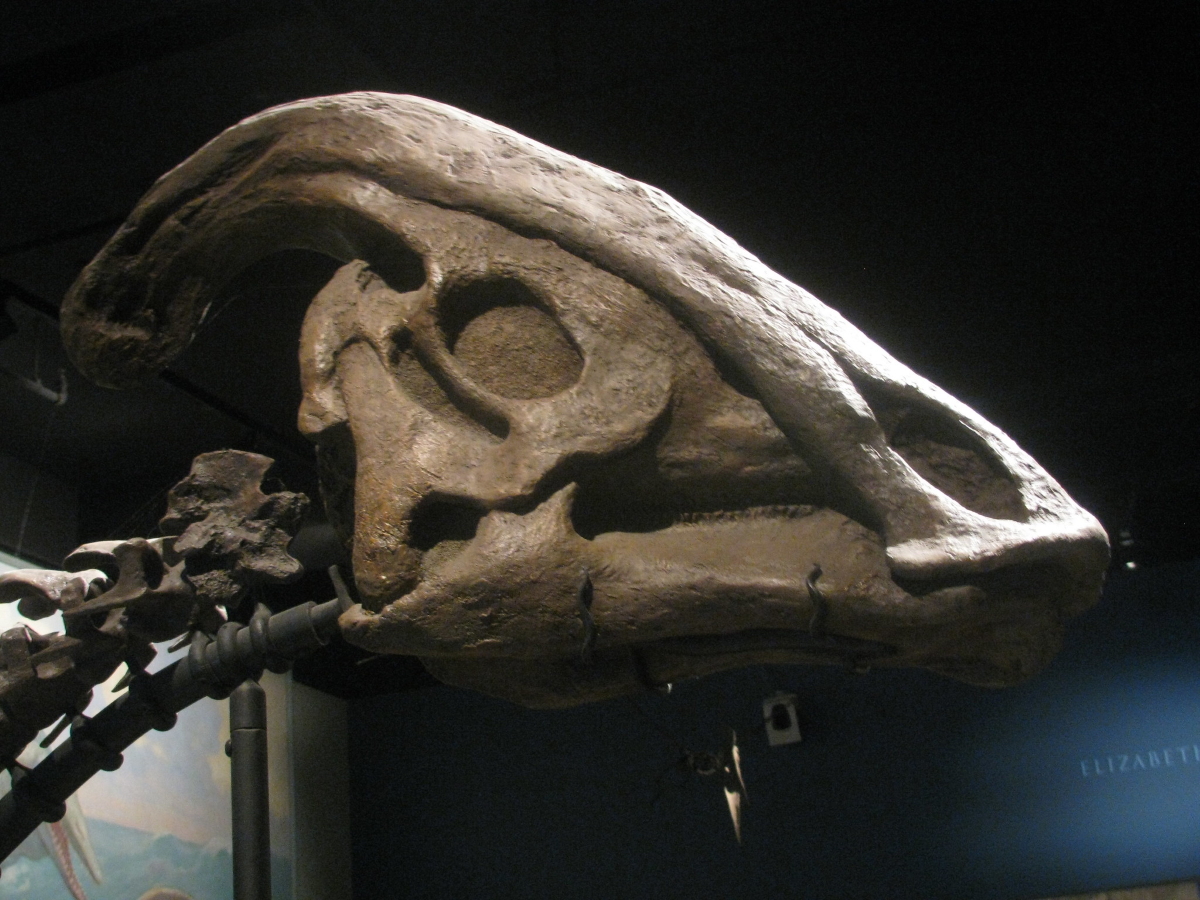
If something is characteristic of Parasaurolophus, it is its large and particular hammer-shaped crest. This composed of the premaxilla and nasal bone and detaches from behind the head, as can be seen in the image. Much has been theorized about it and its function. For example, William Park, who named this genus, proposed that perhaps a linkage between the crest and the neck existed to support the head. Something that when you think about it, is somewhat strange. It has also been proposed that it could have a skin sail from the crest to the neck.
The crest has also been depicted as one of tubular and hollow with 4 hollow sections, two pointing up and two down. The hypothetical function it would have performed would be to be able to hold its breath while underwater. On the other hand, later this theory was also denied. Of course, it has been thought that it was used for the attraction between males and females, perhaps to warn of some danger, or to maintain thermoregulation. Of all the theories, the most plausible is that of communication. The internal hollow parts of the tube, could have functioned as a natural resonator, with a sound function to communicate among its kind.
Food
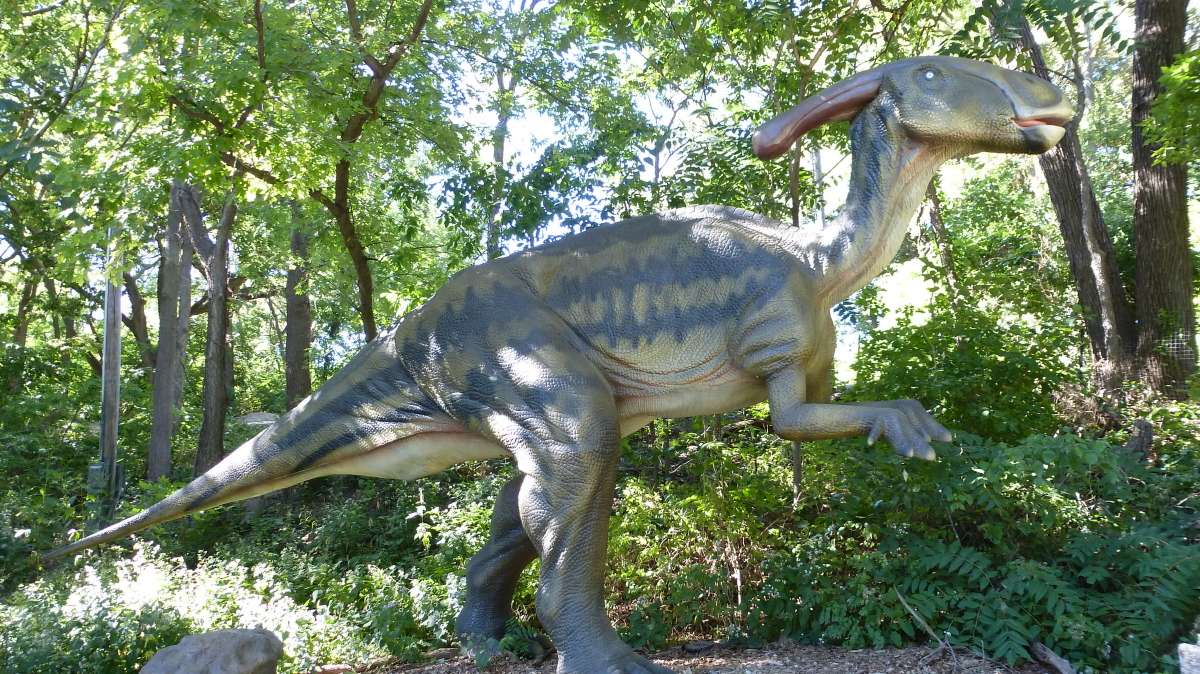
With hundreds of column-shaped teeth that would have been replacing the ones that were wearing out, the diet was completely herbivorous. It had a broad, flattened beak, like a duck's. The wear suffered by his teeth came from a complex chewing in which he ground and crushed the food before swallowing it. This mechanism was quite different from the other herbivores of its time. In addition, it took food with a beak-like organ and could retain food inside its mouth. Something similar to the cheeks of herbivores, which prevented vegetables from falling off. And because of its size it is believed that It could have reached its food up to 4 meters high.
Robert Thomas Bakker, a famous American paleontologist, has collaborated in the development of theories with great contributions to the understanding of dinosaurs. One of them, in which he refers to Parasaurolophus, indicates that its narrow lambeosaurine beak could have made it more selective in food. On the contrary, the hadrosaurines were wider, without this need when selecting food.
Parasaurolophus curiosities
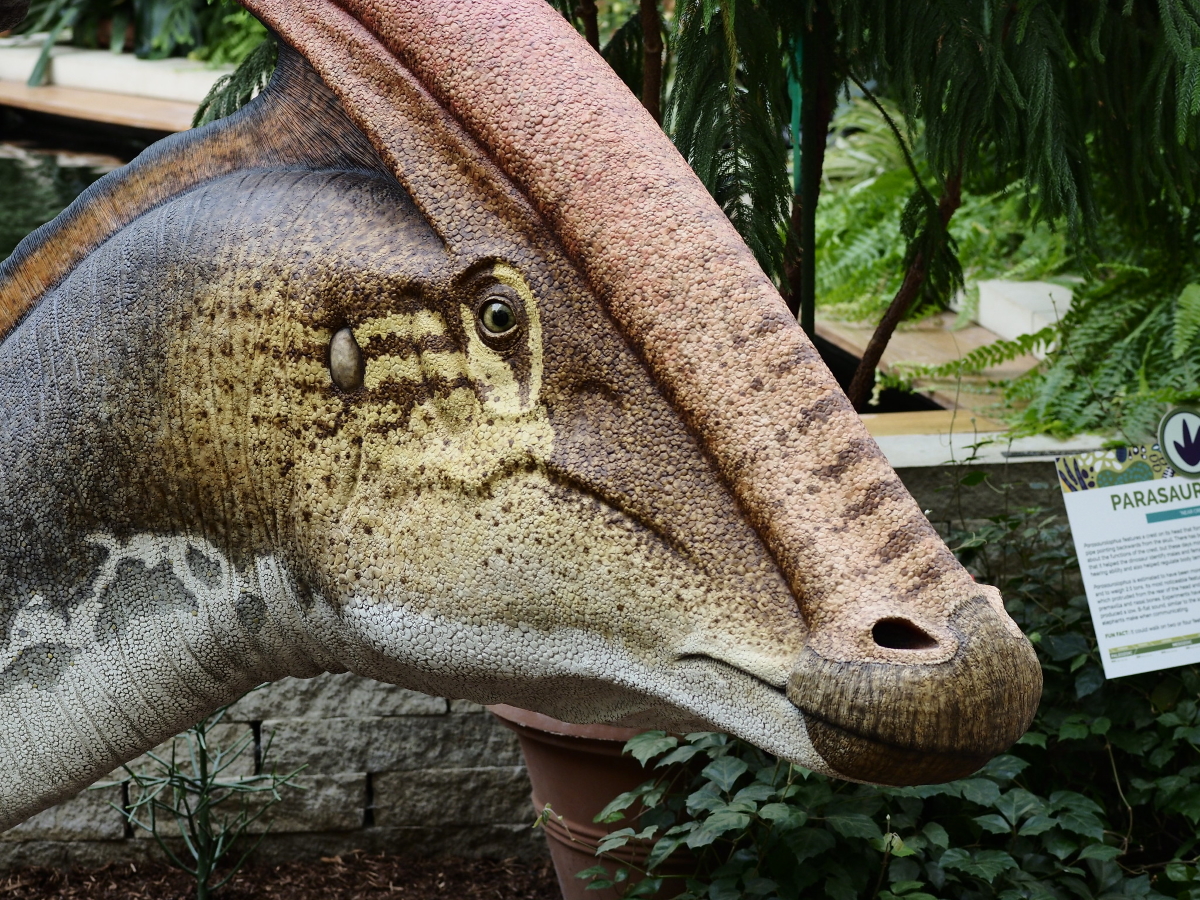
- It is considered that the crest changed with age, sex and the species to which it belonged. There is no real consensus on how it worked, as very different remains were found.
- The beak was very similar to that of ducks, indicating that it may have been a very picky eater.
- The deposits found come from Canada and the United States.
- When blowing hard, the air circulated through the chambers and it sounded like a loud roar.
- Using a computer model of a well-preserved crest of a Parasaurolophus Tubicen, he indicated that sounds would have been produced at 30 Hz.
- Due to fossil remains found in good condition, it was discovered that the internal ear they possessed was very acute and highly developed.
- Indications have been found that seem to indicate that the crest, not only to allow sounds, but also served to identify members of a pack.
- Wheeler proposed in 1978 an explanation of how the crest could have served as thermoregulation by helping to cool the brain.